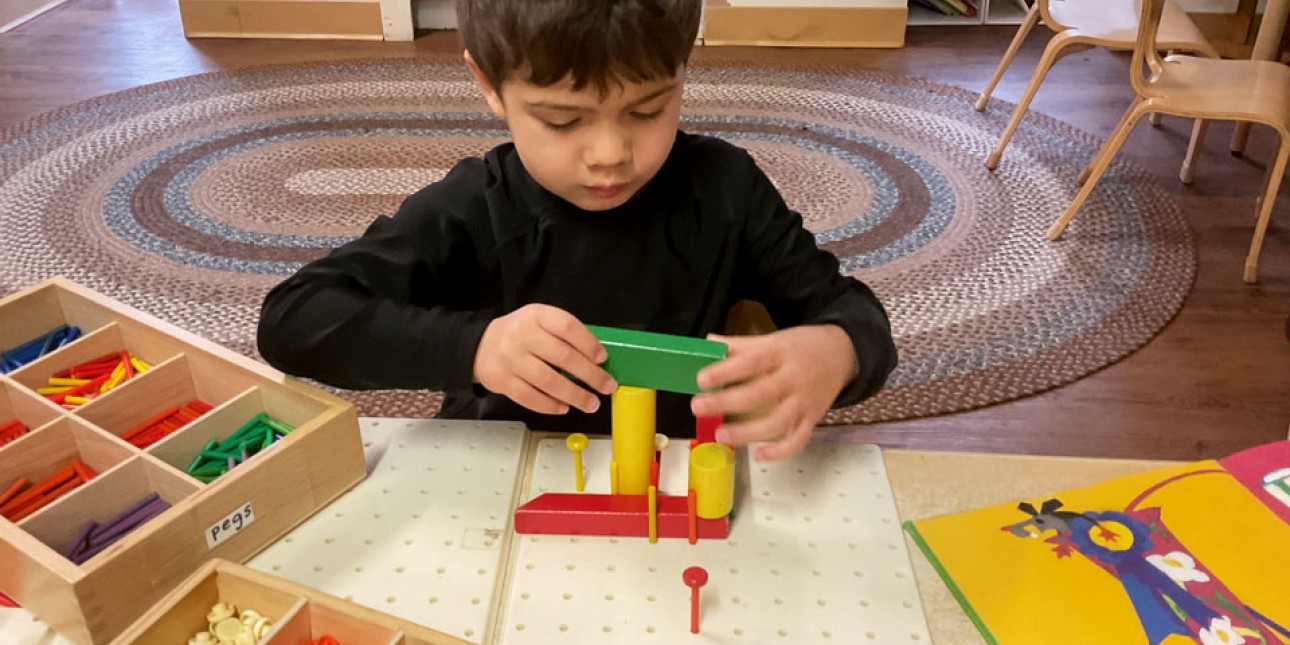Reggio Emilia Inspiration

a message from Executive Director Deb Green
One of the questions we often hear from our families is “What is the Reggio Emilia philosophy that is often discussed in relation to PIC, and is this the curriculum that PIC follows?” I want to take this opportunity to share a bit about this philosophy that has become an important part of the PIC identity and how it aligns with the curriculum that we follow.
PIC follows a “Reggio-inspired” philosophy (this is different from a curriculum.) The Reggio approach to early childhood education originated in a region of Northern Italy, where government money received after World War II was intentionally spent on creating high quality early care and education programs for young children.
Their thinking about children, curriculum and classroom environments earned the program world-wide prestige, and during the 1980s also earned the title of “best early childhood programs in the world.”
Since then, educators across the world have flocked to Italy and to the many early childhood programs across the U.S. to learn more and gain inspiration from the many elements of the philosophy that may be applicable to our own programs.
Below are perhaps some of the most known and crucial elements in the Reggio Emilia philosophy and certainly ones that have inspired our thinking at PIC.
1. Learning based on interests
The Reggio Emilia approach views young children as strong and capable and who acquire knowledge through their natural curiosity and creativity. Their interests are an important part of their own learning. Our teachers are careful observers of children’s play and their interests turn into topics of study.
2. “Depth” as opposed to “Breadth”
Curriculum topics of study usually last for a number of weeks (if not months) and are quite in-depth. Preschool-age children may participate in a lengthy study of “Things that Fly” that takes them in multiple directions, while our youngest children may engage in a study of “Paper” or of “Boxes” for many weeks. It is a child’s interest that drives and deepens their learning.
3. The classroom is a “third teacher”
For the last decade, our classroom upgrades have reflected Reggio thinking and we have very intentionally created classroom learning environments. Our classrooms are open, comfortable, and welcoming spaces filled with natural materials. The setup enables small and large group projects. Such collaborative learning encourages children to “talk, critique, compare, negotiate, hypothesize and problem-solve.”
4. Learning is documented
PIC teachers are dedicated to documenting the progress of learning over time. The approach believes such documentation should be done, for the most part, in a visual manner. So teachers take pictures, save children’s work (such as drawings, works of art, and children’s own words,) to display them in and outside of the classroom. In this way, teachers can make learning visible.
5. The many ways children learn
Reggio believes that children have an endless number of ways of learning, referred to as the “Hundred Languages of Children.” This is reflected in the many materials, methods, instruments, activities, ideas, and tools used by teachers. Children are asked to explore daily to inspire both curiosity and creativity. In the mornings, creative assemblages of materials, known as “invitations for learning,” welcome children into the classroom and invite them to engage in hands-on learning.
The Reggio philosophy is not the only way we are guided in our thinking about how children grow and learn. While Reggio is a “philosophy” rather than a “curriculum”, we do follow a curriculum called the Creative Curriculum, which helps teachers design studies for children that include each of the domains of learning (ie. literacy, mathematics, gross and fine motor development, art, music, and science). The Creative Curriculum is designed to assure that children are moving along the continuum of learning expectations for each age group.
We love how our children are engaged in hands-on learning and discovery experiences each and every day!